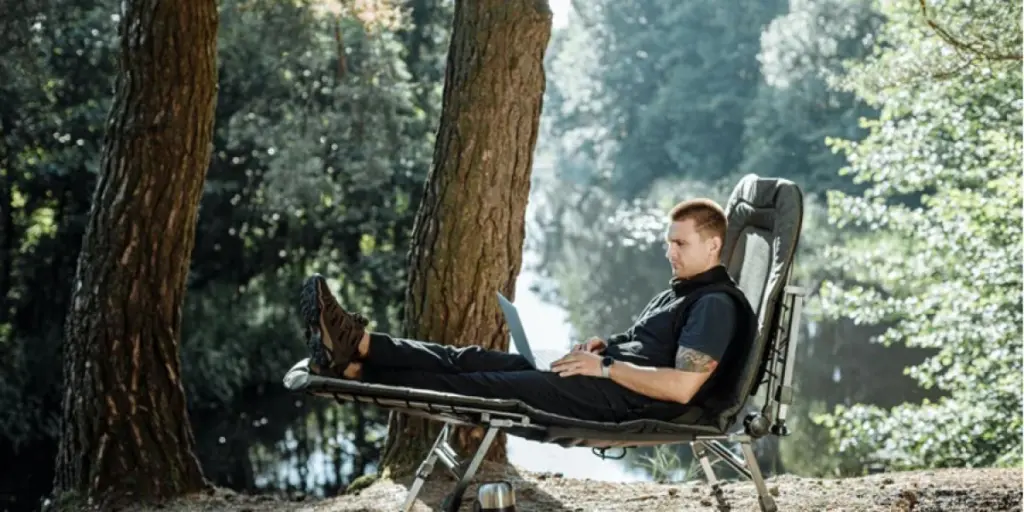In 2024, the cot market presents a dynamic landscape, shaped by evolving consumer needs and technological advancements. Cots, traditionally seen as simple, portable sleeping solutions, have transformed into versatile products catering to diverse scenarios such as outdoor camping, home use, and emergency preparedness. This transformation reflects a deeper understanding of user comfort and functionality, driving innovation in design and materials. For entities engaged in the procurement and distribution of these products, staying abreast of these developments is crucial. The enhanced features and varied applications of modern cots not only offer improved user experiences but also open new avenues for market expansion and customer engagement. As such, a comprehensive grasp of the latest cot models and their unique attributes becomes a valuable asset in the ever-competitive world of online commerce.
Table of Contents
1. Diverse types and practical uses of cots
2. Insight into the cot market of 2024
3. Key considerations for cot selection
4. Leading cot models and their features
5. Concluding thoughts
Diverse types and practical uses of cots

Variety in cot designs: From basic to advanced
The cot market in 2024 showcases a remarkable spectrum of designs, each tailored to specific needs and environments. This diversity reflects a shift from basic, functional models to advanced, feature-rich options. Basic cots, known for their simplicity and ease of use, remain popular for their straightforward design and affordability. These typically feature a simple folding mechanism and are made from durable, lightweight materials, making them ideal for situations where basic comfort and portability are key.
Advancing from these are the mid-range models, which introduce enhanced comfort features such as padded surfaces and adjustable inclines. These cots cater to users seeking a balance between comfort and convenience. The materials used in these models are often more robust, offering greater longevity and resilience in varied conditions.
At the higher end of the spectrum are advanced cots, which incorporate cutting-edge materials and design innovations. These models often feature ultra-lightweight frames, sophisticated suspension systems for superior comfort, and additional amenities like built-in storage and convertible configurations. Such cots are designed for users who prioritize comfort and luxury in outdoor settings or require versatile furniture for limited living spaces.
Usage scenarios: Camping, home use, and emergency preparedness

The practical uses of cots have expanded significantly, mirroring the diversity in their designs. In camping scenarios, cots elevate users off the ground, providing protection from uneven terrain and insulation from cold surfaces. They are a staple in outdoor recreational activities, offering a portable and comfortable sleeping solution that enhances the camping experience.
In home settings, cots serve as convenient temporary bedding solutions. They are particularly useful in small living spaces where traditional beds are impractical. The ease of storage and setup makes them ideal for accommodating guests without the need for permanent extra bedding.
Emergency preparedness is another critical area where cots play a vital role. In situations like natural disasters or pandemics, where temporary shelters are required, cots provide essential sleeping arrangements. Their portability and ease of setup make them ideal for rapid deployment in emergency shelters, offering a semblance of comfort in challenging circumstances.
In summary, the cot market in 2024 presents a range of products that cater to a wide array of needs, from basic outdoor sleeping solutions to advanced, multi-functional furniture. This diversity not only reflects the evolving consumer preferences but also underscores the importance of these products in various practical scenarios. For those involved in the distribution and sale of cots, understanding this spectrum and its applications is key to meeting the diverse needs of their clientele.
Insight into the cot market of 2024
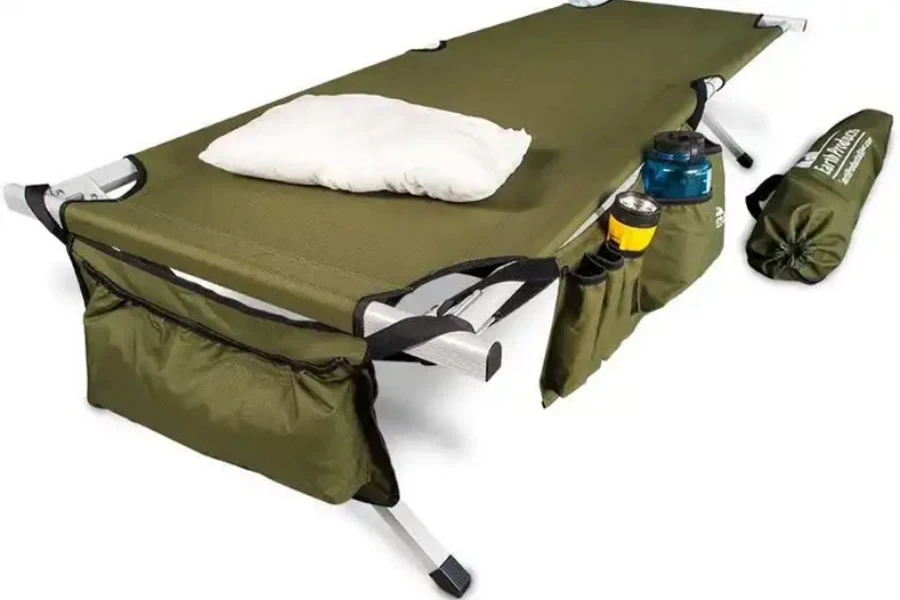
The camping equipment market, which includes camping cots, is projected to grow significantly in the coming years. According to a report from Mordor Intelligence, the market is expected to expand from USD 18.5 billion in 2023 to USD 24.93 billion by 2028. This growth represents a Compound Annual Growth Rate (CAGR) of 6.15% during the forecast period from 2023 to 2028.
Current market trends and consumer preferences
The cot market in 2024 is characterized by evolving trends and consumer preferences, significantly influenced by technological advancements. The current market trends indicate a growing demand for cots that are not only functional but also aesthetically pleasing and technologically advanced. Consumers are increasingly looking for products that offer a blend of comfort, convenience, and style. This shift is evident in the rising popularity of cots with enhanced features such as built-in storage, adjustable settings, and even smart technology integrations like USB ports for device charging.
Another notable trend is the increasing demand for eco-friendly and sustainable products. Consumers are more environmentally conscious and seek cots made from sustainable materials and processes. This has led to the introduction of cots made from recycled materials and those that follow a more sustainable manufacturing process.
Impact of technological advancements on cot designs
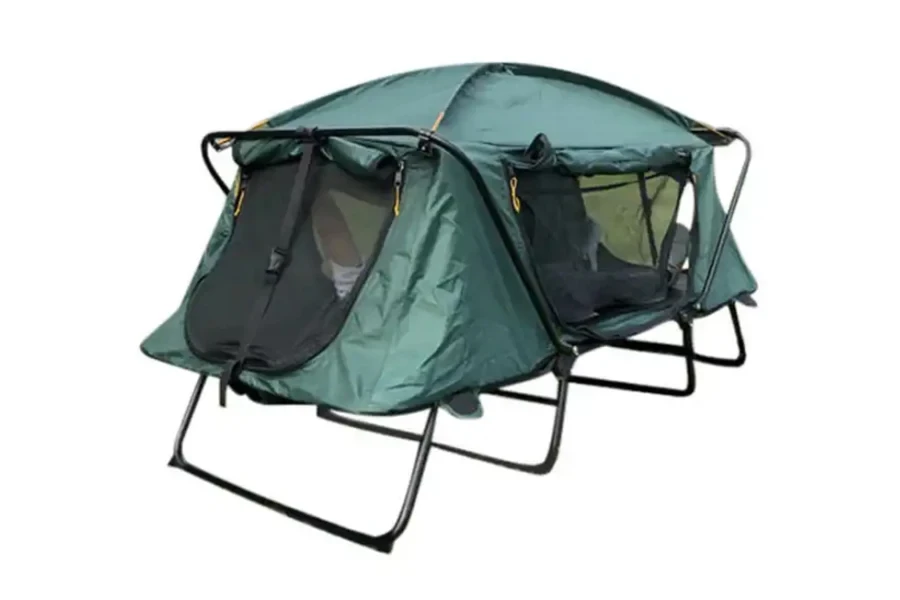
The impact of technological advancements on cot designs is profound. The use of lightweight yet durable materials has become more prevalent, allowing for the production of cots that are easy to transport yet robust enough to withstand various conditions. Innovations in design have also led to the development of multi-functional cots that can serve various purposes, such as convertible cots that can be used as chairs or lounges.
Smart technology integration is another area where significant advancements have been made. Some high-end cots now come equipped with features like climate control, which allows users to adjust the temperature of the cot for optimal comfort. This is particularly appealing in the camping sector, where weather conditions can greatly impact the camping experience.
In terms of consumer preferences, there is a noticeable shift towards personalized products. Consumers are looking for cots that can be customized to their specific needs, whether in terms of size, color, or additional features. This has led manufacturers to offer more customizable options, allowing consumers to tailor products to their exact preferences.
The cot market in 2024 is thus a blend of traditional values and modern innovations. While the basic function of providing a portable sleeping solution remains unchanged, the way this function is delivered has evolved significantly. The market now offers a wide range of products that cater to various needs and preferences, driven by technological advancements and changing consumer behaviors. For those in the business of selling cots, understanding these trends and advancements is crucial to cater to the sophisticated needs of today’s consumers.
Key considerations for cot selection
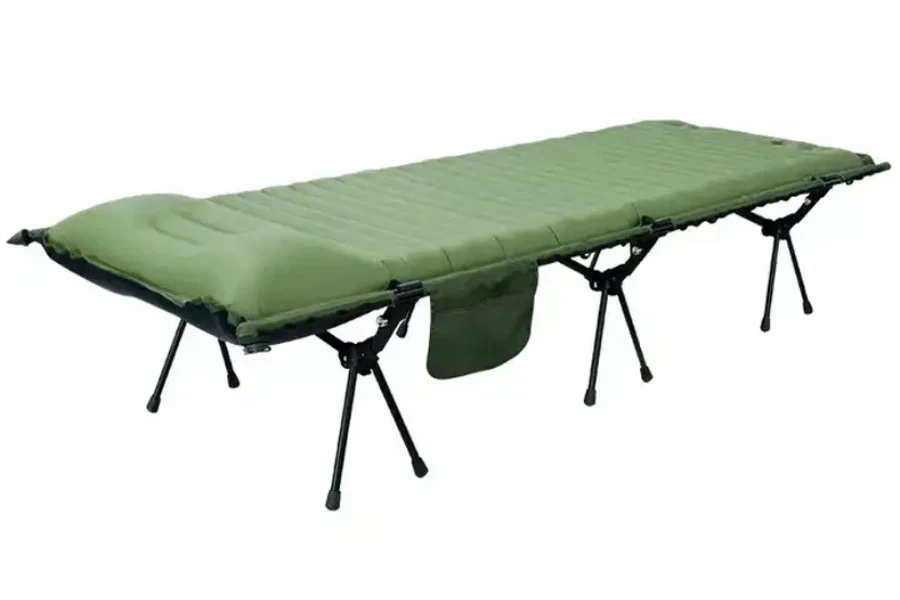
In the dynamic market of camping cots, discerning the key factors for product selection is crucial for businesses. This section delves into the primary considerations that should guide the selection process, ensuring that the products align with consumer expectations and market demands.
Assessing quality and durability: What to look for
Quality and durability are paramount in the selection of camping cots. The materials used in construction play a critical role in determining the longevity and resilience of the product. For instance, aluminum frames are favored for their lightweight yet sturdy nature, offering a balance between portability and durability. The fabric is another crucial element, with ripstop nylon and polyester being popular choices due to their tear resistance and ease of maintenance. Additionally, the joint construction and weight capacity are indicators of a cot’s durability, with reinforced joints and higher weight limits signifying a more robust build.
Comfort and size: Matching consumer needs
When selecting a camping cot, comfort and size are crucial factors that significantly impact the user experience. Here’s an in-depth look at these aspects:
Average Size of Camping Cots
Standard Dimensions: The average size of camping cots typically ranges from 25 to 30 inches in width and 75 to 80 inches in length. This size comfortably accommodates most adults while ensuring a compact form for easy transport.
Larger Options: For those needing more space, larger cots are available, measuring up to 40 inches in width and over 85 inches in length. These are ideal for taller or larger individuals, providing ample room without compromising comfort.
Comfort Features
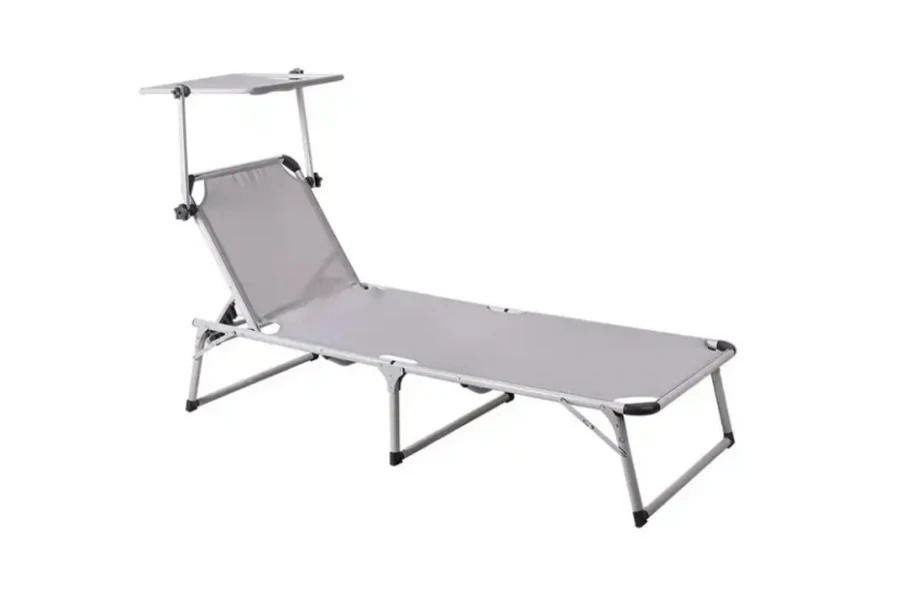
Padding and Support: Many cots come with built-in padding or allow the addition of a mattress pad. This feature enhances comfort, especially for side sleepers or those with back issues.
Frame and Fabric: The frame’s construction and the fabric’s quality are pivotal. Aluminum frames are lightweight yet sturdy, while polyester or nylon fabrics offer durability and breathability.
Elevated Design: The elevated design of cots keeps users off the ground, away from moisture and crawling insects, contributing to a more comfortable sleep.
Weight Capacity: It’s essential to consider the weight capacity, which typically ranges from 250 to 600 pounds. This ensures the cot can comfortably support the user’s weight without any risk of damage.
In conclusion, the right camping cot can significantly enhance the outdoor experience. By considering factors like size, comfort features, and user feedback, campers can find a cot that perfectly matches their needs, ensuring a restful and enjoyable outdoor adventure.
Portability and ease of use: Essential for modern consumers
When it comes to camping cots, portability and ease of use are paramount for modern consumers. Here’s a detailed look at these aspects:
Average Weight of Camping Cots
Standard Cots: The average weight of standard camping cots is approximately 14.7 pounds. These cots are designed for single-person use and offer a balance between durability and portability.
Lightweight Options: For those prioritizing portability, lightweight models such as the DesertWalker and HitorHike cots weigh between 2.8 and 5 pounds, making them ideal for backpackers and travelers who need to minimize their load.
XL or Oversized Cots
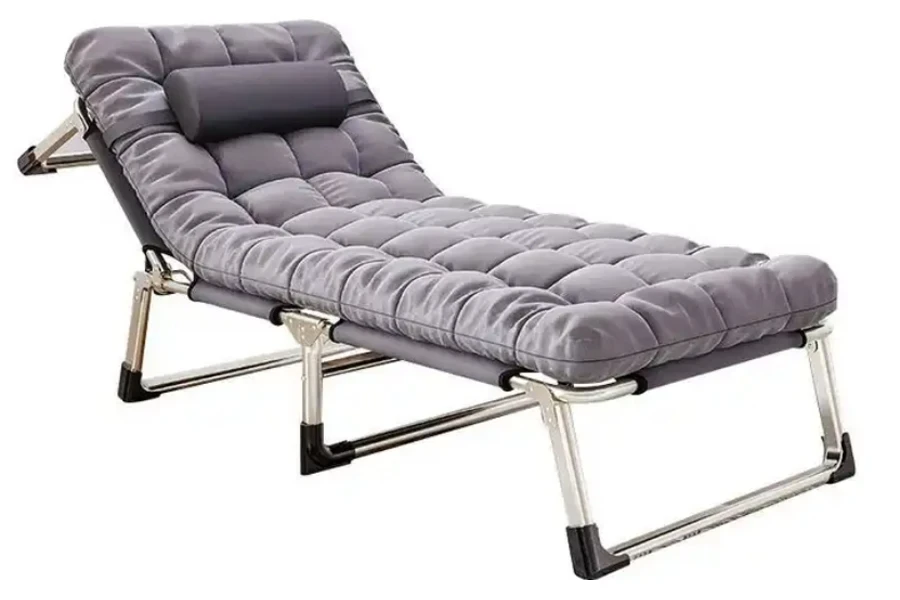
Heavier but Spacious: XL or oversized cots, providing extra space, average around 27 pounds. While heavier, they offer more room and comfort, suitable for larger individuals or those preferring more sleeping space.
Weight Capacity: These larger cots can typically hold about 446 pounds, accommodating most campers comfortably.
Ease of Use
Assembly and Disassembly: The ease of setting up and taking down the cot is a critical factor. Many modern cots are designed for quick and hassle-free assembly, which is highly valued by campers.
Transportability: Features like foldability and the inclusion of carrying bags enhance the cot’s transportability, making them more appealing to consumers who move frequently.
Comfort and Practicality
Ground Elevation: The elevated design of cots not only adds to comfort by keeping users off the ground but also aids in portability, as these designs often allow for more compact folding.
Temperature Regulation: The design and material of the cot can influence temperature regulation, with some designs allowing for better airflow, making them suitable for warmer climates.
In conclusion, the portability and ease of use of camping cots are crucial factors for modern consumers. By balancing weight, size, and design features, manufacturers can cater to the diverse needs of campers, ensuring a comfortable and convenient outdoor experience.
Leading cot models and their features
Overview of top-rated cots: From Coleman to KingCamp
In the realm of camping cots, certain brands have established themselves as leaders. Coleman, known for its robust and user-friendly designs, offers models that cater to a wide range of camping needs. KingCamp, on the other hand, is celebrated for its innovative features and premium comfort. These brands, among others, have set benchmarks in the industry, offering products that blend durability, comfort, and practicality.
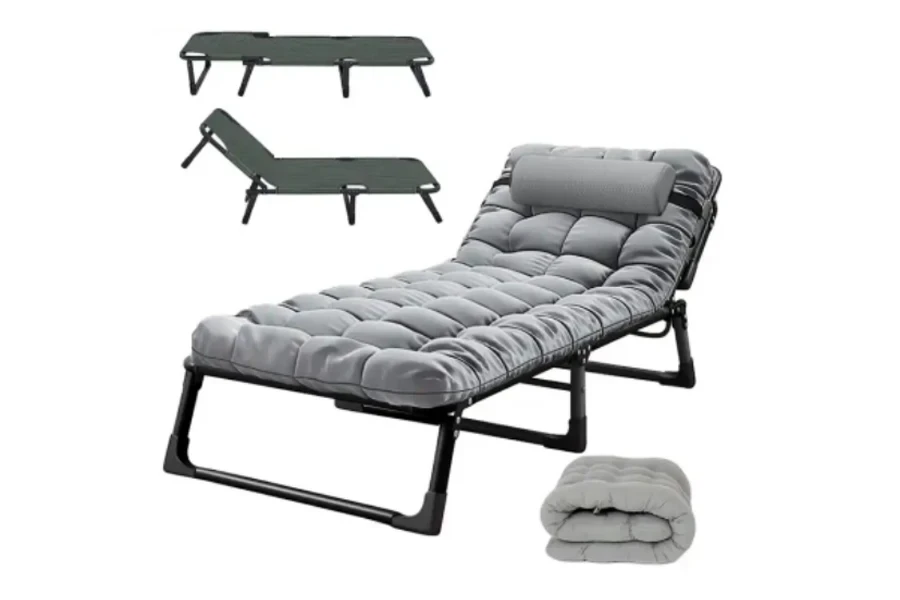
Therm-a-Rest UltraLite Cot: Known for its lightweight design, the Therm-a-Rest UltraLite Cot weighs only 2.3 pounds, making it ideal for backpackers. It features a unique BowFrame technology that eliminates painful crossbars, ensuring an off-ground sleep experience. The cot can support up to 325 pounds and is easy to set up without tools.
REI Co-op Camp Folding Cot: This cot is praised for its durability and comfort. It has a strong steel frame capable of supporting up to 300 pounds. The cot’s dimensions are 75 x 25.5 inches, providing ample space for a restful sleep. It also includes a side pocket for storing personal items.
Helinox Lite Cot: A favorite among ultralight campers, the Helinox Lite Cot weighs just 2.8 pounds. Despite its lightweight, it can support up to 265 pounds. Its unique tension system provides a stable and comfortable sleeping surface. The cot is also compact when packed, making it easy to carry on long treks.
Teton Sports Outfitter XXL Cot: This is one of the largest cots on the market, measuring 85 x 40 inches. It’s designed for larger campers or those who prefer extra space. The aluminum frame is sturdy, supporting up to 600 pounds. It also features a patented pivot arm for easy setup.
Coleman ComfortSmart Deluxe Cot: Known for its extra cushioning, this cot includes a thick foam mattress and a spring coil suspension, providing bed-like comfort. It can support up to 300 pounds and is suitable for people up to 6 feet 6 inches tall. The cot’s heavy-duty steel frame ensures durability.
Each of these models offers unique features catering to different camping needs, whether it’s lightweight design for backpackers or extra comfort for car campers. Their innovative designs and robust construction have made them popular choices among outdoor enthusiasts in 2024.
Comparative analysis: Price, comfort, and durability
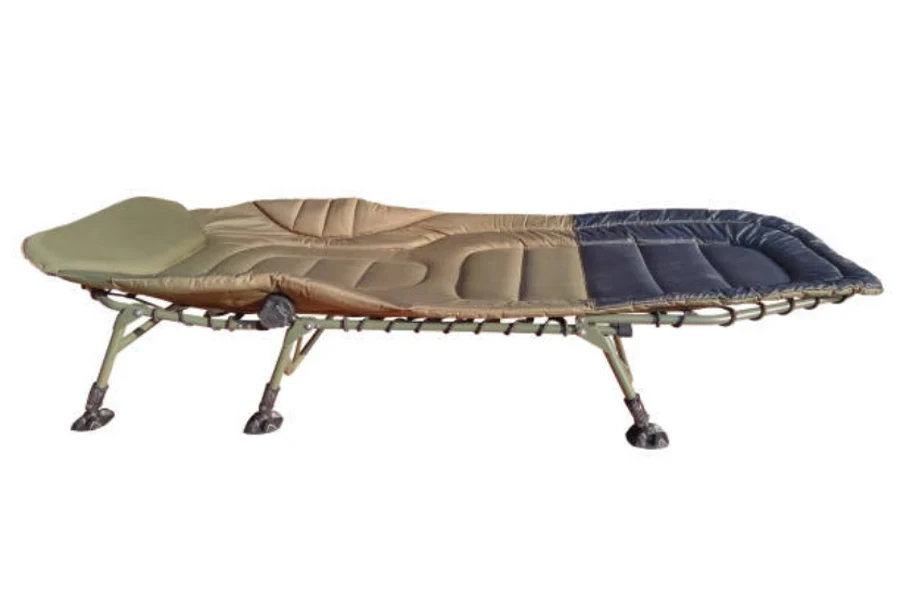
Price Range: The market presents a diverse price range, with cots from brands like Coleman and Teton Sports available from $50 to over $150. This variation in price often reflects differences in materials, comfort features, and durability.
Comfort Factors: Comfort is a key selling point, with many models featuring padded surfaces, adjustable settings, and ergonomic designs. For instance, the Teton Sports Outfitter XXL Cot is renowned for its spacious and comfortable sleeping surface.
Durability Aspects: Durability is determined by frame construction and fabric quality. Aluminum frames paired with high-strength polyester or nylon fabrics are common in top-rated models, ensuring longevity and resilience in various outdoor conditions.
Innovative features: What sets leading models apart
Advanced Design Elements: Innovations in cot design include ultra-lightweight frames, collapsible structures for easy transport, and integrated storage solutions. For example, some cots from Helinox are designed to be exceptionally lightweight yet strong, using advanced materials like DAC aluminum alloy.
Customization Options: Some models offer customization in terms of height, firmness, and even the ability to convert into chairs or loungers, enhancing their versatility.
Eco-Friendly Materials: A growing trend in the industry is the use of sustainable materials, with brands like REI Co-op focusing on eco-conscious production methods and materials.
Concluding thoughts
The evolving cot market in 2024 presents a diverse range of products, each tailored to specific consumer needs. From lightweight, portable designs ideal for backpackers to robust, comfort-oriented models for leisure camping, the selection caters to a wide spectrum of outdoor enthusiasts. For online retailers, understanding these variations and their associated consumer preferences is crucial. Emphasizing quality, durability, and innovative features in product offerings will align with market trends and consumer expectations. This strategic approach ensures that retailers remain competitive and responsive to the dynamic demands of the modern outdoor equipment market.
